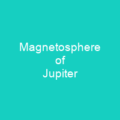Uranus: The Enigmatic Seventh Planet
Imagine a world so distant that it takes 84 years to orbit the Sun, a place where temperatures plummet to -371.5°F (-224.2°C), and where its atmosphere is composed of water, ammonia, and methane. Welcome to Uranus, the seventh planet from our star, a celestial body shrouded in mystery and wonder.
Uranus: A Unique Giant
Is Uranus just another giant planet, or does it hold secrets that set it apart? This ice giant is not only the coldest planet in our solar system but also has a tilted axis of 82.23°, making its poles point almost directly at the Sun during solstices. Its retrograde rotation period of 17 hours and 14 minutes adds to its uniqueness, as does its complex layered cloud structure.
Discovering Uranus: A Serendipitous Journey
How did we stumble upon this distant world? The story begins in 1781 when William Herschel, a German-born British astronomer, discovered what he initially thought was a comet. It wasn’t until later that it became clear: Uranus had been hiding in plain sight for centuries, with the earliest possible observation dating back to Hipparchus in 128 BC.
Uranus’ Naming Controversy
Why did Herschel name his discovery after George III? The naming process was far from straightforward. Initially, he called it ‘Georgium Sidus,’ but the name didn’t stick. It wasn’t until 1782 that Johann Elert Bode proposed the Latinized form of the Greek god of the sky, Ouranos (Uranus), which eventually became widely accepted.
Uranus’ Atmosphere: A Mysterious Layer
What secrets lie within Uranus’s atmosphere? The planet’s atmosphere is composed mainly of molecular hydrogen and helium, with trace amounts of methane giving it its blue-green hue. Beneath this layer lies a complex structure that includes an icy mantle and a rocky core. The internal heat is surprisingly low, leading to many unanswered questions about the planet’s formation.
Uranus’ Moons: A Family of Oddities
How do Uranus’ moons compare to those of other planets? With 28 known natural satellites, including five major ones (Miranda, Ariel, Umbriel, Titania, and Oberon), Uranus has a diverse family of moons. These moons are mostly ice-rock conglomerates with low albedos, some showing signs of recent geological activity.
The Magnetosphere: A Unique Magnetic Field
What makes Uranus’ magnetosphere so peculiar? The planet’s magnetic field is tilted at 59° from the axis of rotation and shifted towards the south rotational pole, creating a highly asymmetric magnetosphere. This unique structure results in varying magnetic field strengths between the hemispheres and opens the planet to the Sun’s particles.
Uranus’ Rings: A Dark Mystery
Can you see Uranus’ rings from Earth? The rings are composed of extremely dark particles, making them difficult to observe directly. Thirteen distinct rings are known, with the brightest being the ε ring. These rings may have originated from a shattered moon due to high-speed impacts.
The Future of Uranus Exploration
What lies ahead for our understanding of Uranus? The possibility of sending a spacecraft to explore Uranus has been discussed, with plans including an orbiter and probe mission. While no missions have yet been launched, the potential for groundbreaking discoveries in this ice giant remains high.
Conclusion
Uranus, with its tilted axis, unique atmosphere, and enigmatic moons, continues to captivate scientists and space enthusiasts alike. As we continue to explore our solar system, Uranus stands as a testament to the vast mysteries that still await us in the cosmos.

You want to know more about Uranus?
This page is based on the article Uranus published in Wikipedia (retrieved on December 1, 2024) and was automatically summarized using artificial intelligence.







